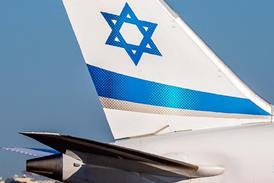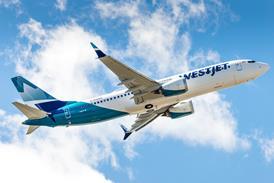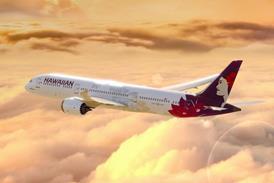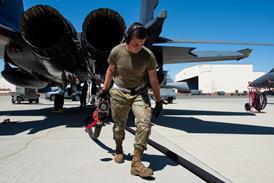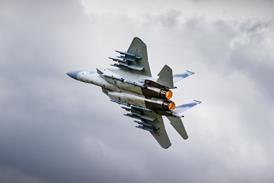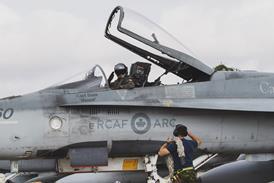David Learmount/LONDON
WHEN A CREW CONSISTS of a single pilot, a training system designed to enhance flightdeck efficiency through better intra-crew co-operation looks irrelevant. Crew-resource management (CRM) has proved to be a flexible concept, however, able to deliver its merits to all types of operation.
CRM does not consist of a cast-iron syllabus. Those who attend the seminar "teach themselves" with the help of a "facilitator" - an instructor whose job it is to prompt discussion among the participants about exercises in which they have taken part. In large airlines, a CRM training session may take the form of a self-debrief following a filmed simulator exercise. The crew watch the video of themselves and discuss what was done well or badly, and how it could have been done better. Particular emphasis is placed on crew-co-operation and the human-factors (HF) aspects of performance. Smaller general-aviation (GA) operators might watch a video in which pilots re-enact the scenario before a real accident or incident and discuss what led to the errors. In a single-crew situation, the efficiency of the operation and decision-making quality are examined.
European Joint Aviation Regulations (JARs) require that a pilot flying, for example, a Cessna 172 on commercial transport operations must be CRM-trained. There is still debate in the industry about how much benefit such a regulation produces in practice, but the consensus is moving in favour of acceptance.
Tailoring crm for ga use
CRM, which was developed specifically for two-pilot or three-crew airline operations, needed tailoring for GA use. It was originally called cockpit-resource management, terminology which has now evolved further for the big carriers, but could still be used accurately to describe CRM's role in training for single-pilot operation. In the airline case, however, CRM now stands for crew- or even company-resource management. Whichever name it takes, however, and in whatever type of operation, its consistent aim is improved flight-safety through better understanding and management of the HF side of flight operations.
Capt John Barker of Fairoaks, UK-based Hi-tec Training is one of the pioneers of European CRM, having conducted CRM training seminars for more than 1,000 GA, ex-military and airline pilots during the past five years - the formative period for regulatory CRM east of the Atlantic. While this component of pilot training is still young in Europe's airlines, CRM in most of the GA sector is brand-new.
Barker says that, in mainland Europe, the aviation authorities have done little to prepare for the JAR's requirement of CRM training at the GA level, and that the UK Civil Aviation Authority "-should be commended for introducing HF and CRM training [as requirements in UK flightcrew licensing], although they have not been entirely successful in ensuring its conscientious implementation".
There are still some GA sectors where CRM has not yet penetrated, although plans are taking shape. The UK CAA's Ken Lilley, responsible to his organisation for the development of JAR Operations, says that there is no requirement in force for CRM in aerial work (for example, agricultural flying, observation, etc) or, strangely, in training. During 1997, however, regulations will be drawn up for pilots in those sectors.
The CAA has introduced a small measure of HF awareness into the studies for the private pilot's licence (PPL), but this is relatively primitive compared with the HF-awareness test which forms part of the UK commercial pilot's licence examination. Lilley adds that there are no initiatives planned for the introduction of CRM into the PPL syllabus.
Graham Forbes, chief executive of the UK General Aviation Manufacturers and Traders Association (GAMTA) puts CRM into its GA perspective, saying: "The reasons for the introduction of mandatory CRM for pilots in 1992 were fully appreciated by the whole aviation community, including general aviation."
The penalty to small GA operators, however, in terms of cost and manpower, was extreme, especially in the ad hoc charter industry. In 1992, GAMTA, in conjunction with the Aviation Training Association and Hi-tec's Barker, applied for CAA approval to conduct a one-day course, with pre-course study material, which would "-satisfy the limited resources of GA and yet meet the requirements of the Authority".
Capt John Myers, of FR Aviation, says that the backgrounds of pilots who attend CRM training seminars vary enormously, from self-improvers with 700h on Cessna 150s to converting military pilots with 7,000h on fast jets. Barker and Myers both make the point that one of the best examples of why CRM is necessary is the fact that two such different pilots might end up on the same flightdeck and have to act in harmony with each other. Barker explains: "I believe that the practical debate and discussion that takes place at CRM training seminars is an invaluable forum to learn from one's peers, and reinforces the link between academic concepts and practical application."
Even among those pilots who come from a GA background, the disparity of experience can be wide, Barker says, pointing out: "The GA pilots attending our courses tend to fall into several groups according to their original background: for example, well-trained and disciplined ex-military officers; former major-airline pilots; very experienced GA pilots; self-improvers with little flying experience; and those who have had many jobs and been exploited by 'fly-by-night' operators.
The levelling factor
"Within each group, there is a wide variety of abilities, attitudes, technical knowledge, understanding of what makes flying safe and the ability to cope with commercial pressures. CRM seminars go some way toward countering any shortcomings in these," Barker believes. Myers cites CRM as "a great leveller," and says that the best tool for making everyone realise that they face the same basic problems is the use of video-recording in training sessions, with playback and discussion among the group.
Coventry, UK-based operator Air Atlantique, which trains its own pilot recruits and offers third-party CRM training tailored for "small operators", says that there is still a great deal of individual resistance to CRM among aircrew in the GA sector, who attend only to stay within the law. Most sceptics are convinced by the end of the day that CRM has something to contribute, the school says, citing videos showing re-enacted cockpit sequences leading to familiar accidents as being a powerful tool in persuading pilots of their fallibility.
One CRM discussion video on GAMTA's list is "the mystery of flight 163", about the 19 August, 1980, Saudia Lockheed TriStar incident, in which all on board died in a cabin fire following a safe landing at Riyadh, Saudi Arabia. Conversely, positive examples of aircrew using co-operative skills are also used, such as a reconstruction of the actions of the United Airlines McDonnell Douglas DC-10 crew at Sioux City, Iowa, in July 1989, where the crew made the best possible use of what little control they had left after complete flight-control loss.
Air Atlantique sticks rigorously to GAMTA-benchmark standards in its CRM training, sending out pre-course preparation material, which includes a questionnaire about the pilots' backgrounds so that the "facilitator" knows where to pitch the group discussions. There are never more than 12 trainees per seminar.
Ab initio CRM
Barker says that the HF and CRM syllabi already need to be updated, with CRM concepts being introduced "at an early stage in ab initio training". He believes that standard operating procedures should be examined in detail and "-modified to take account of human fallibility", and that day-to-day operations "-need to be more disciplined". CRM in single-crew operations is effective, he says, if the trainees use the experience "-to appraise how they operate, particularly on the decision-making side".
The perception of CRM as an imposition is still its greatest handicap, particularly in the GA sector. All the trainers are at pains to point out that participating pilots draw up their own agendas for CRM training. The seminar which they attend helps them to appraise what they do, discuss it with their peers under the guidance of the "facilitator", and the natural result of the improved awareness tends to be an increase in self-discipline and efficiency in the cockpit.
Source: Flight International

